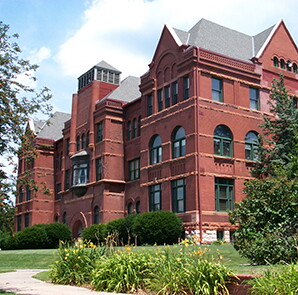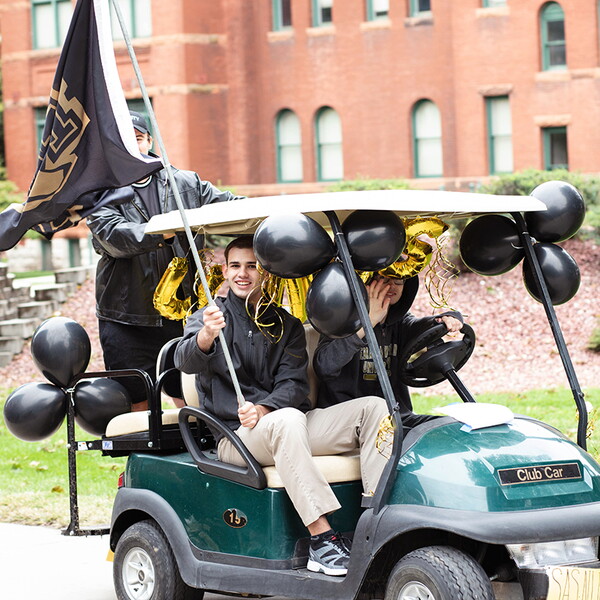Lightning Policy Policy
|
Policy title
Lightning Policy Policy
|
Category
Administration
Facilities
Human Resources
Public Safety/Risk Management
|
|
Owner
Risk Management Committee
|
Approved by
Administrative Council
|
Lightning is one of the most common and dangerous weather conditions that impacts outdoor events. Being aware of and following the lightning safety policy and related procedures can greatly reduce the risk of injury or death. This set of procedures will apply to all employees, students, and guests of Nebraska Wesleyan University. This policy may also apply to NWU sponsored events at off-site locations.
The Vice President for Finance and Administration, Provost and Director for Public Relations will monitor severe weather through various weather-related apps and the National Weather Service. If severe weather approaches the NWU Lincoln campus, employees and students will be notified using NWU’s Wesleyan Alert communication system.
Procedures:
DO take these safe actions:
- If you see a thunderstorm approaching or hear it on the news you should not start any outdoor tasks that can’t be stopped rapidly. Seek safe shelter in a fully enclosed building if possible. Vehicles can also be used if a safe building structure is not accessible.
- If you find someone struck by lightning, call 911 immediately. Assess the situation for safety. If safe, administer CPR/AED if needed and call campus security.
- Retreat to dense areas of smaller trees that are surrounded by larger trees, or retreat to low-lying areas.
- Remaining on your feet, crouch low to the ground, curl up in a ball-like position with as little of your body touching the ground as possible. Beware of flooding.
AVOID the following dangers if possible:
- Stay away from tall trees, hilltops, utility poles, cellular phone towers, cranes, small and large equipment, ladders, scaffolding, or rooftops.
- Do not seek shelter in a parking garage or concrete structures due to the metal reinforcements.
- Never lie flat on the ground and avoid open areas, such as fields.
- Immediately get out of and away from bodies of water.
- Beware of exposed wiring, fencing or plumbing.
- Refrain from taking shelter in metal sheds, pavilions, tents, covered porches, or other unsecured areas of shelter.
- Do not use corded phones, except in the case of an emergency. Cellular phones are ok to use.
Athletic Events: In the case of inclement weather that includes lightning, a member of the Athletic Training Staff will monitor lightning activity, follow, and adhere to the ‘Lightning Safety for Athletics and Recreations’ position statement from the National Athletic Trainers’ Association (NATA).
The officials, administration and athletic trainer will discuss and decide on the continuation or termination of such event. The athletic trainer on site will make the decision to remove a team or individuals from an athletic site or event. If the competition is postponed, all spectators, officials, athletes, and support staff will evacuate the facility and seek shelter in a designated area or safe shelter until the game or event resumes. For more specific instructions for Athletic events, see the NWU Emergency Action Plan for facilities at https://nwusports.com/sports/2020/9/9/emergency-action-plans.
Lightning Suspension/Resumption Procedure:
The preferred method of determining a lightning strike is by using weather-related apps. These apps will provide information about the distance from your location to the nearest lightning strikes.
However, as an alternative to a weather app, the Flash-to-Bang method for detecting lightning in the area is also acceptable. To utilize this method, the weather watcher begins counting when a lightning flash is spotted. The counting is stopped when the associated clap of thunder is heard. The number of seconds elapsed between the flash of lightning and bang of thunder is then divided by 5. This number represents the distance, in miles, from the lightning hit. For example, when the Flash-to-Bang count reaches 50 seconds, the lightning has struck 10 miles away.
As an organization, NWU will wait 30 minutes after the last lightning flash is seen or the last roll of thunder is heard to resume activity. It may seem safe to return to activity after the storm has passed, but this is not true. Lightning can and does strike at least 10 miles away from the storm even after the clouds have moved on. This phenomenon is known as a “bolt out of the blue”. Therefore, every time lightning is seen, or thunder is heard, the clock should be reset.
Employees Working Outdoors:
Supervisors and workers need to be aware and take shelter if a thunderstorm approaches or lightning strikes. Physical Plant employees will be informed of an approaching storm by radio or personal contact. The employees should take shelter in any of the campus buildings and wait for the storm to safely pass prior to resuming outdoor activities.
To learn more about lightning safety go to weather.gov/safety/lightning



